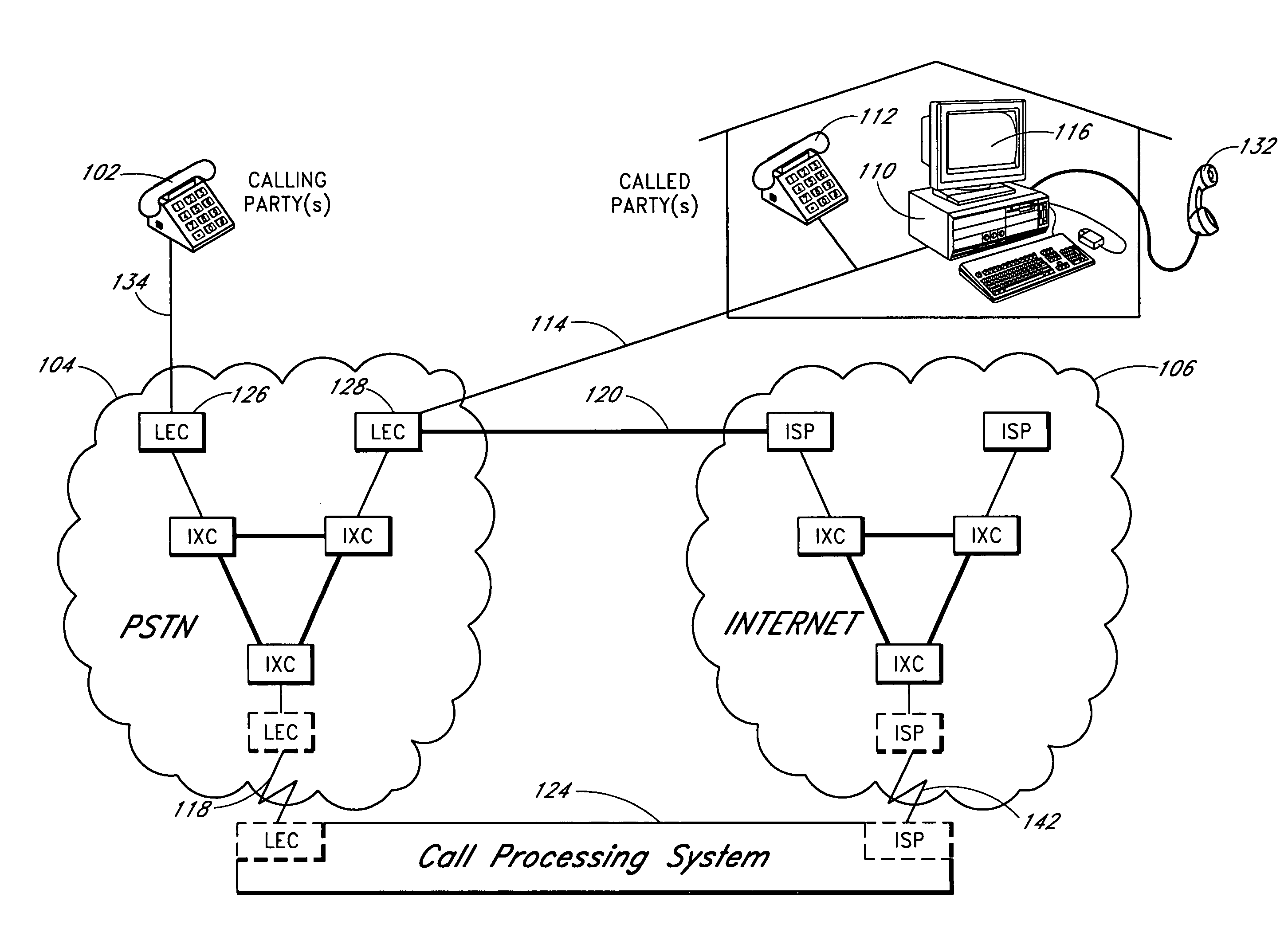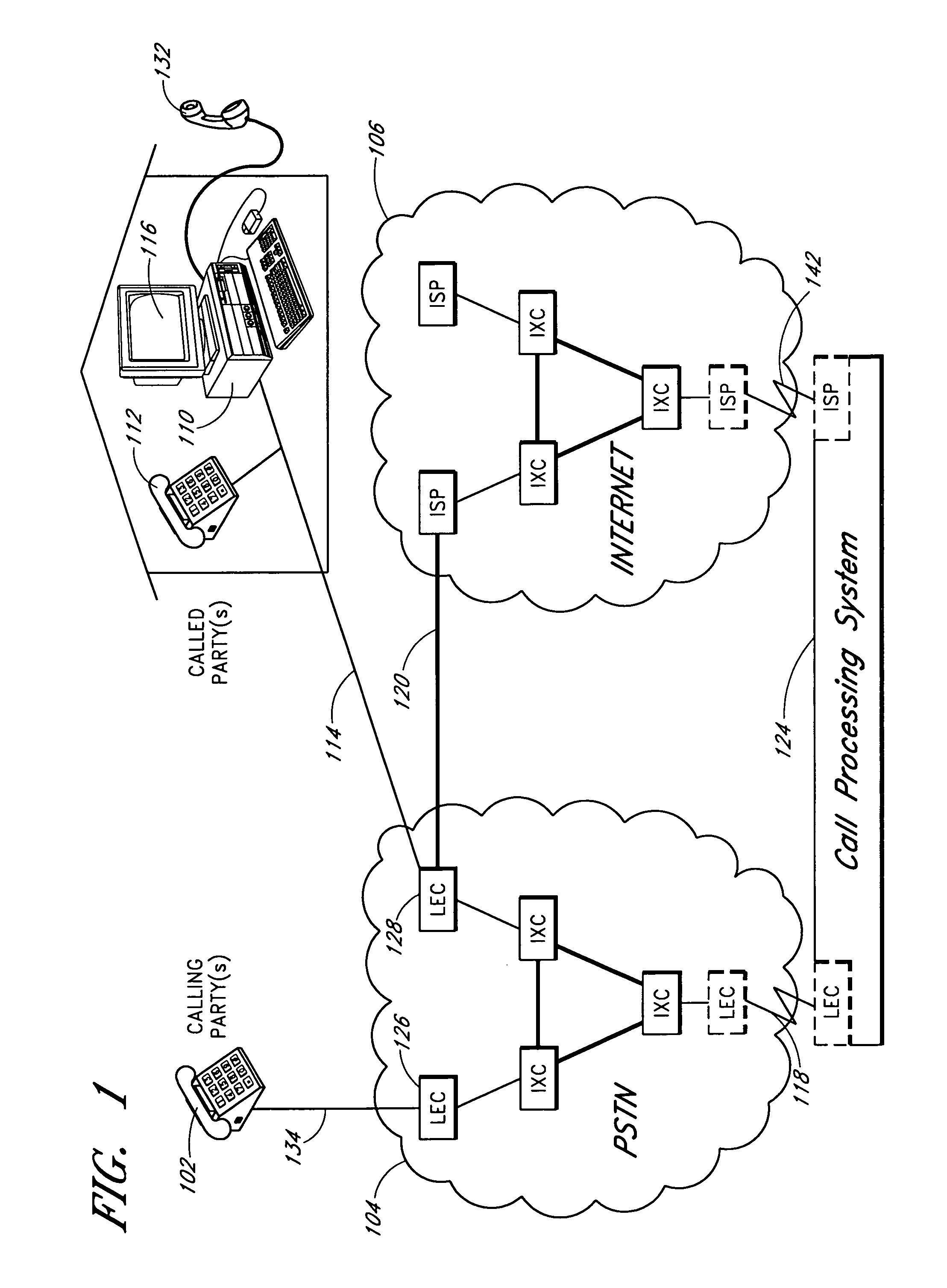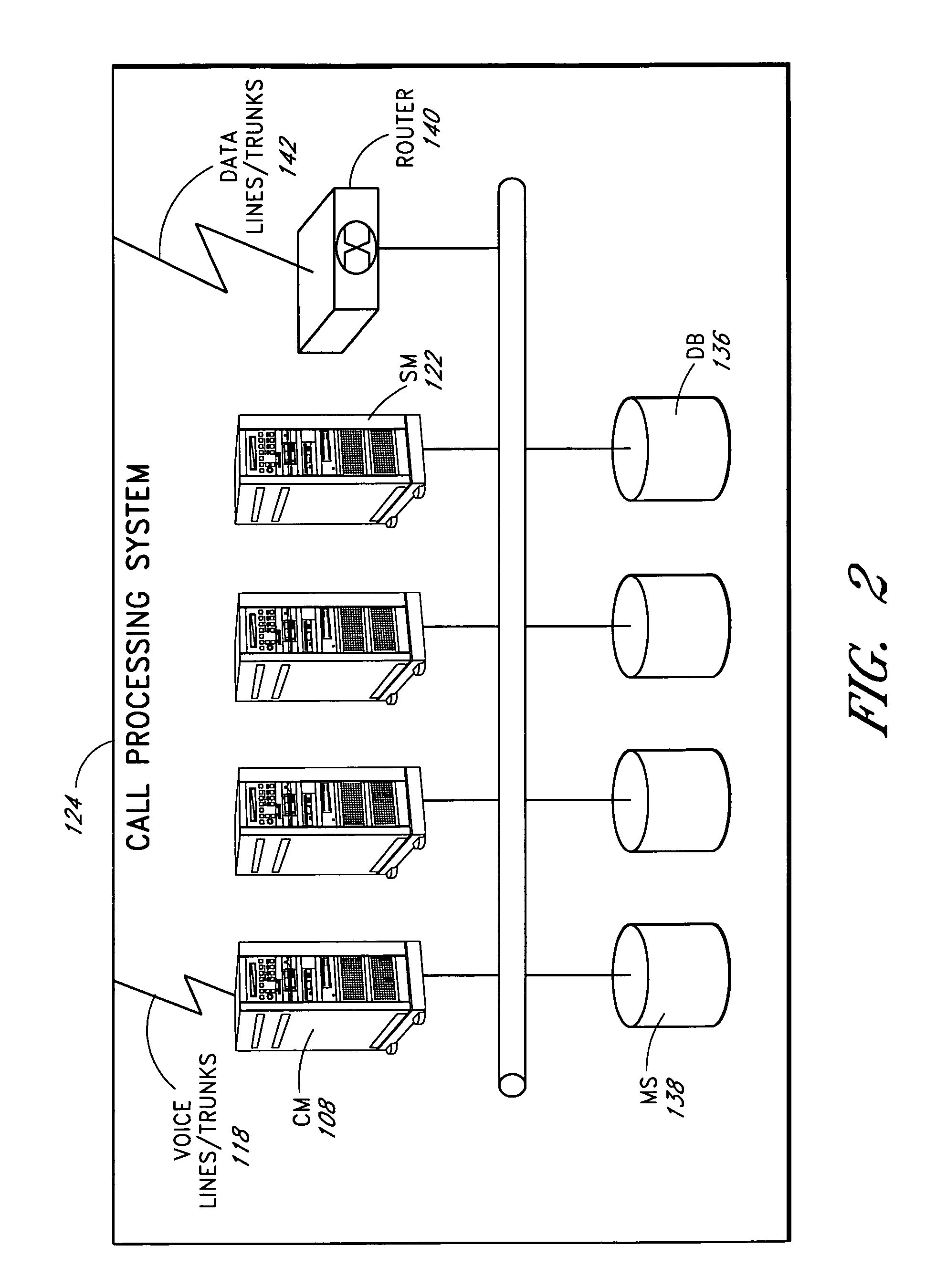Methods and systems for telephony call-back processing
a call-back processing and telephone technology, applied in the field of telephony, can solve the problems of not allowing message screening, and not being able to handle busy calls, so as to reduce call costs and improve call quality
- Summary
- Abstract
- Description
- Claims
- Application Information
AI Technical Summary
Benefits of technology
Problems solved by technology
Method used
Image
Examples
Embodiment Construction
[0030]Embodiments of the present invention are directed methods and systems for providing call screening and / or call forwarding / transfer in conjunction with a variety of network-based telephone call answering processes and services.
[0031]Throughout the following description, the term “Web site” is used to refer to a user-accessible network site that implements the basic World Wide Web standards for the coding and transmission of hypertextual documents. These standards currently include HTML (the Hypertext Markup Language) and HTTP (the Hypertext Transfer Protocol). It should be understood that the term “site” is not intended to imply a single geographic location, as a Web or other network site can, for example, include multiple geographically distributed computer systems that are appropriately linked together. Furthermore, while the following description relates to an embodiment utilizing the Internet and related protocols, other networks, such as networked interactive televisions, ...
PUM
 Login to View More
Login to View More Abstract
Description
Claims
Application Information
 Login to View More
Login to View More - R&D
- Intellectual Property
- Life Sciences
- Materials
- Tech Scout
- Unparalleled Data Quality
- Higher Quality Content
- 60% Fewer Hallucinations
Browse by: Latest US Patents, China's latest patents, Technical Efficacy Thesaurus, Application Domain, Technology Topic, Popular Technical Reports.
© 2025 PatSnap. All rights reserved.Legal|Privacy policy|Modern Slavery Act Transparency Statement|Sitemap|About US| Contact US: help@patsnap.com



